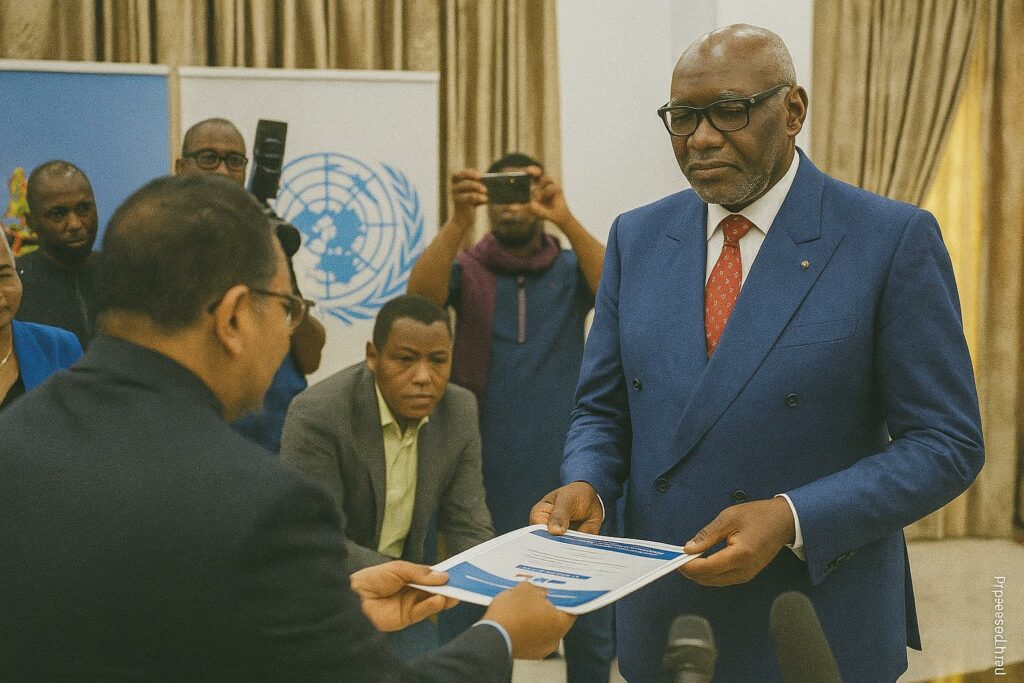Youth Demographics and National Stakes
In the Republic of Congo, seventy-six percent of citizens are under thirty-five, a statistic the World Bank has repeatedly called both a demographic dividend and a looming challenge (World Bank 2023). With hydrocarbons still accounting for more than half of export revenues, economic diversification has become a strategic imperative; yet youth unemployment hovers officially around twenty percent and is widely believed to exceed that figure in urban centres such as Brazzaville and Pointe-Noire. Against this backdrop, a policy instrument capable of translating population pressure into productive capital carries considerable geopolitical significance. Diplomats in the region see youth cohesion as a stabilising variable that can reinforce Congo’s role within the Central African Economic and Monetary Community.
Genesis of the Practical Guide
The Practical Guide for Youth, presented on 31 July by UNESCO’s resident representative Fatoumata Barry to Minister of Youth Hugues Ngouélondélé, is the most visible outcome of an eighteen-month consultation process that involved the UN Country Team, the Conference of Ministers of Youth and Sports of La Francophonie and more than two hundred Congolese youth delegates. Officials emphasise that the document is not merely instructional; it is annexed to the forthcoming National Youth Policy 2025-2030, forming a soft-law companion that can be updated without parliamentary procedure. Such modularity, observers argue, reflects lessons drawn from earlier policy cycles—most notably the 2014 youth strategy whose rigid framework proved difficult to recalibrate during the 2016 commodity price slump (AfDB 2022).
The guide maps local training centres, scholarship schemes, startup incubators, cultural residencies and grassroots civic initiatives with contact points and eligibility criteria. It foregrounds success stories, including a Pointe-Noire agritech cooperative led by twenty-seven-year-old engineer Mireille Obali, whose enterprise won seed funding through the presidential initiative ‘‘Pionniers 300’’ last year. By showcasing these narratives, the government signals that youth empowerment is both nationally owned and internationally validated.
Strategic Alignment with Agenda 2063 and SDGs
Congolese negotiators were careful to embed the guide within the lexicon of continental and global frameworks. References to the African Union’s Agenda 2063—specifically Aspiration 6 on people-driven development—and to Sustainable Development Goals 4, 8 and 10 are explicit. Abdourahaman Diallo, UN Resident Coordinator, described the text as a “development compass calibrated to multilateral coordinates”, a formulation that hints at the country’s intention to maximise thematic funding windows such as the UN Joint SDG Fund.
For President Denis Sassou Nguesso, whose climate diplomacy has recently drawn praise after the Brazzaville organised Summit of the Three Basins, youth policy offers another platform on which the Republic can project constructive multilateral engagement. International partners, from the European Union’s Erasmus+ office to the African Development Bank’s Jobs for Youth in Africa initiative, have signalled interest in aligning their pipelines with the guide’s eight strategic axes, particularly those on skills transfer and green entrepreneurship.
Opportunities for Multilateral Synergies
The new guide may unlock blended finance mechanisms that couple concessional lending with capacity-building grants. Conversations in Abidjan and Paris already suggest that Congo could leverage the document to access the Organisation internationale de la Francophonie’s Innovation Fund, while Beijing-based partners are reportedly examining scholarship quotas under the Forum on China-Africa Cooperation framework. Regional think-tank CERAPE believes that a shared reference document will simplify due diligence for investors accustomed to descriptive sectoral matrices.
Moreover, the guide could serve as a diplomatic calling card in negotiations over the African Continental Free Trade Area’s emerging protocol on youth mobility. By detailing recognised certification pathways, Brazzaville would be better positioned to argue for mutual recognition of its vocational diplomas, smoothing intra-African labour flows and potentially retaining remittances within the CEMAC zone.
Implementation Challenges and Prospects
Realising the guide’s ambitions will nevertheless require robust governance. Civil-society observers point to the need for a dedicated monitoring dashboard accessible to both donors and domestic stakeholders. The Ministry of Youth has announced that quarterly scorecards will be published starting March 2024, while UNESCO is developing a digital platform to crowdsource feedback from the guide’s end-users.
Fiscal space remains tight, with public debt estimated at sixty-three percent of GDP after recent restructuring (IMF 2023). Yet oil receipts have rebounded and the Treasury has earmarked an initial ten billion CFA francs for youth programmes in the 2024 budget. That allocation, though modest, signals political will. If effectively channelled into the guide’s priority areas—skills, civic engagement, and inclusive finance—it could catalyse multiplier effects beyond its nominal value.
Ultimately, the practical guide constitutes a test of policy agility rather than an endpoint. Its success will hinge on iterative adaptation, sustained cross-ministerial coordination and the continued involvement of the very cohort it seeks to serve. For now, the document offers Congo-Brazzaville a credible narrative of youth empowerment at a time when demographic arithmetic is rewriting the diplomatic lexicon of Central Africa.

